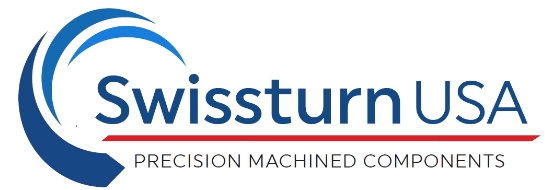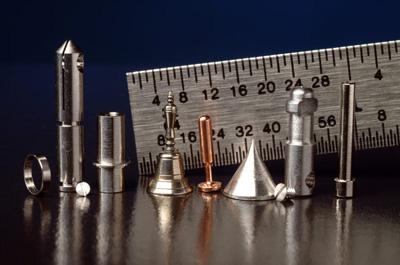The rapid advancement of technology, combined with the demand for smaller, precise components, has resulted in the development of a new type of manufacturing technique specifically for tiny, intricate components: Micro-precision components typically size in micrometers (μm) or even nanometers (nm) and are found in a growing range of industries, especially medical devices, electronics, and aerospace components.
The major types of micromachining
Currently, two main types of micromachining exist and are determined by the methods used to shape material. Mechanical micromachining utilizes physical tooling, such as drill bits or grinding wheels, to remove material from the workpiece and create the desired part shape. On the other hand, non-mechanical micromachining uses energy, such as EDM or laser machining, to produce the desired part shape.
Mechanical Micromachining Techniques
- Milling: A milling machine utilizes a rotating tool to remove material from a stationary workpiece. This process is commonly used to create microfluidic devices, optical components, and electronic circuitry.
- Turning: In CNC turning, the workpiece is rotated against a stationary tool to remove material. This method is often employed to produce small shafts, pins, and other cylindrical components.
- Drilling: The machine drills holes into a workpiece using a predetermined drill bit.
- Grinding: The main tool of this type of technique is a grinding wheel, which removes material from the workpiece, resulting in a clean, smooth, and accurate surface.
Non-mechanical Micromachining Techniques
- Electrochemical machining (ECM): ECM breaks down material with an electric current in a chemical bath.
- Electrical Discharge Machining (EDM): EDM utilizes electrical discharges to erode material from the workpiece, creating intricate shapes and features in hard or conductive materials.
- Micro-Abrasive Jet Machining: This type of equipment propels fine, abrasive particles at high velocities toward the material to shape it. Micro-abrasive jet machining is especially suited to delicate materials and high aspect ratio structures.
- Laser machining: Laser machining vaporizes or melts material from the workpiece to shape it and is used extensively in producing devices, medical implants, and microelectromechanical systems (MEMS).
- Ion beam machining: An ion beam removes material from the workpiece.
- Plasma etching: A plasma beam removes material from the workpiece.
The advantages and disadvantages of micromachining
Micro-precision machining is a complex and challenging process with gratifying results–so long as the process is expertly conducted, no matter the type. The main hurdle of this type of manufacturing is the removal of burrs and surface roughness. Even minor errors can result in significant defects, hence the need to ensure even these tiny parts are burr-free.
When it comes to mechanical micromachining, tool wear and breakage can compromise the precision and accuracy of the final product. Tooling of any sort requires consistent inspection and maintenance to maintain the production process’s precision and accuracy. Other critical factors of mechanical micromachining that should be considered include minimizing tool vibrations, controlling thermal effects, and maintaining a stable machining environment. Other characteristics to remember are tool material, machining parameters, and tool path optimization.
The applications of micromachining
Micro precision machining has numerous applications but is especially vital to producing electronics components such as integrated circuits (ICs), microchips, and microsensors. Medical devices also benefit from micromachining, which can create products such as medical implants, surgical tools, and microfluidic devices for diagnostics and drug delivery.
Other applications include:
- Aerospace fuel injectors, turbine blades, and micro-actuators.
- Automotive fuel injection nozzles, sensors, and other small components
- Optical components like lenses, prisms, and mirrors
- Microelectromechanical systems (MEMS): miniature mechanical and electrical components, such as accelerometers and gyroscopes.
Looking to the future
Nanotechnology and material sciences advancements are consistently revolutionizing the capabilities of micro precision machining. Nanomaterials have unique properties that may lead to robust, wear-resistant tooling. Additionally, integrating artificial intelligence and machine learning algorithms can optimize machining parameters, enhancing efficiency and reducing waste. With ongoing research and innovation, the future looks promising, paving the way for smaller, faster, and more advanced products across various industries.

